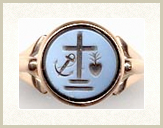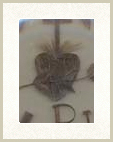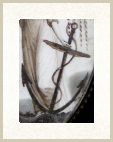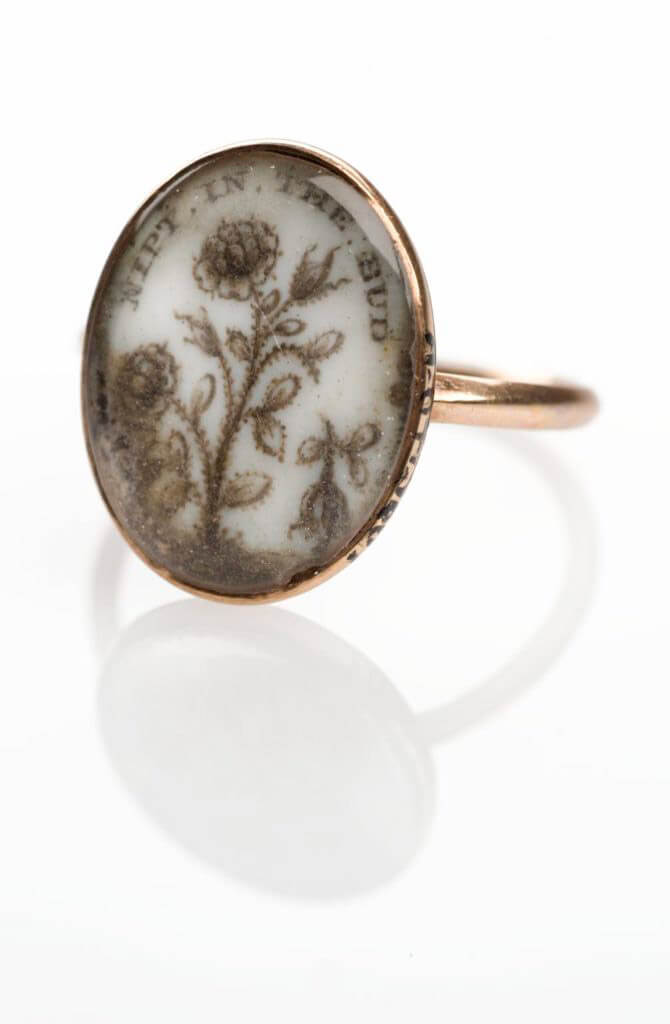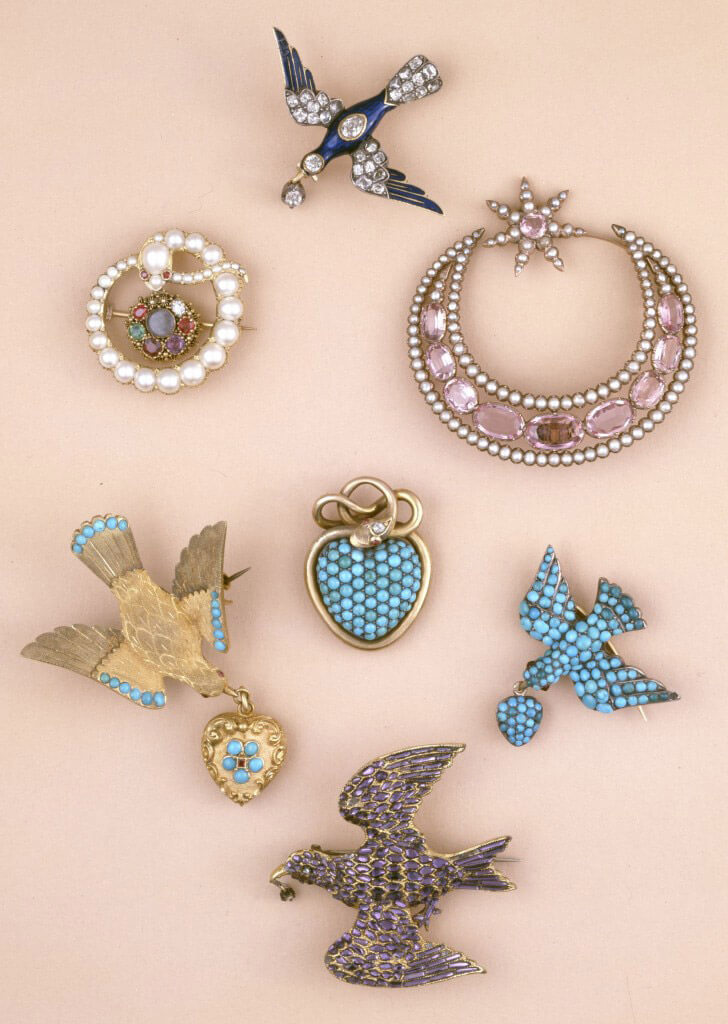Symbolism, Faith, Hope & Charity
Faith, Hope and Charity are the most important symbols of the late 18th and 19th centuries, being proud symbols of British national pride and social behaviour. The anchor was often used to represent British naval pride and also the loss of a loved one who had been part of the war effort against Napoleon. The cross was often integrated within the anchor, or as its own symbol, as can be seen in this ring. This became far more important during Victoria’s reign, with a reflection back on the Christian values of the family, which she was integral on reinstating along with her husband, Albert. The heart, meaning love, is love for the family and love for others, which all come together to create solid social values for the 19th century family.
As attributed to the Apostle Paul, this quote from 1 Corinthians 13 shows the genesis of the concept:
“And now these three remain: faith, hope and love. But the greatest of these is love.”
There is also the allusion to the holy trinity with the faith, hope and charity symbols, which links to another symbolism that is somewhat related. You’ll have to wait another week or so for that.
So, let’s look at Faith. If you hadn’t guessed by now, it’s not the anchor or the heart, but that big cross which often stands taller than the other symbols when depicted. See, that one wasn’t too hard. Faith and the cross symbol are generally hard to separate, even when the cross is used on its own, as it has the obvious connection to Christ. The cross had a renewed popularity in the 19th century as a symbol in jewellery, whereas its incorporation into Neoclassical pieces is often a little more covert. The Neoclassical period (in its basic form) was a revival of Greek/Roman/Early Western culture and art and it goes without saying that these were polytheistic societies. With greater social mobility, a shift away from the ecclesiastical lifestyle and putting more focus on the ‘self’, the use of heavy Christian symbolism was alluded to, relegated to peripheral symbols or painted at the request of person who commissioned the piece. This changed in the 19th century, with the re-establishment of Christian values and the cross became popular once more as a singular motif.
Charity is the heart. The heart is one of the most commonly used symbols in Western society and also one of the most timeless. Charity is love and affection and you will no doubt see this symbol a lot on your travels. Defying any strict religious connotation, the heart motif has transcended nearly all of the evolving art styles upon sentimental jewellery. These pieces were created with the intention of love, so what is love without a heart?
Lastly is Hope, the anchor. The anchor can often be seen when combined with the cross to create the crux dissimulata (representing the church), but it lends itself to a more literal translation of the obvious anchor = hope. Many times people can be confused with the anchor, it is also seen on its own and some see that as simply a seafaring relationship. When it comes to mourning and sentimentality, hope is a powerful statement on its own merits.




